
Mysterious 'Alien Egg Pods' Discovered In Reservoir – Expected To Multiply
Unusual discovery of 'alien egg pods' sparks curiosity and concern as experts predict potential multiplication.
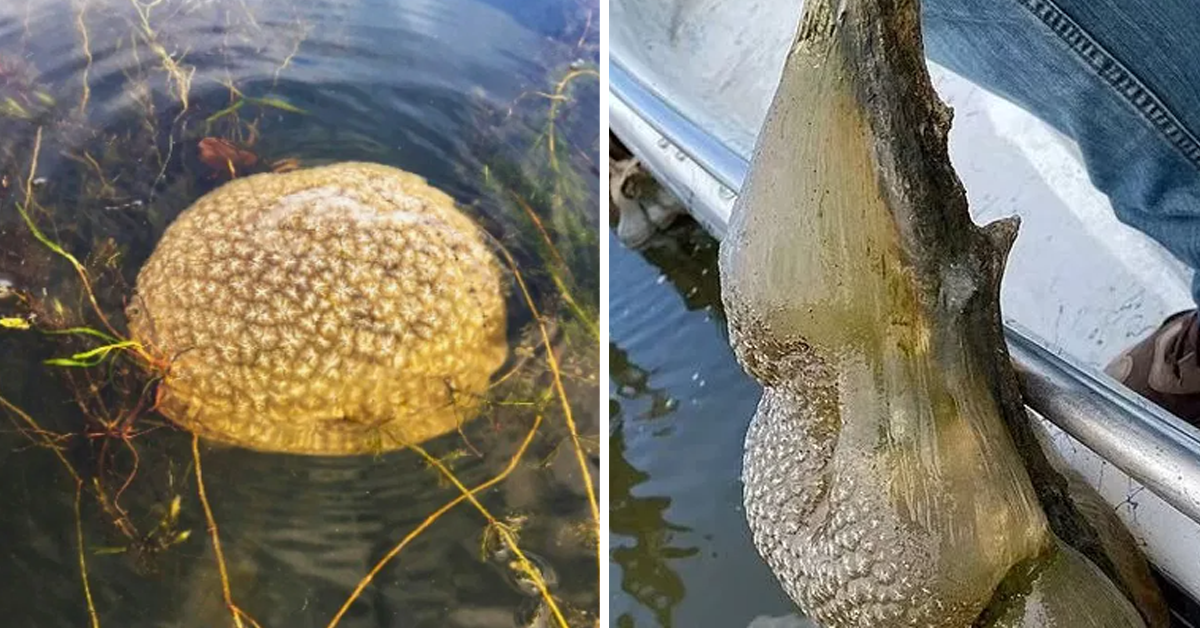
A baffling revelation has emerged from a reservoir where peculiar "alien egg pods" have been unearthed, igniting both fascination and apprehension. Experts speculate on the possibility of these enigmatic pods multiplying, raising questions about their origin and potential impact.
The discovery has sparked a blend of curiosity and concern, prompting further investigation into this mysterious phenomenon.

According to wildlife experts, the recently discovered pods are actually a great benefit for the area and serve as a key component in maintaining the "quality and clear water" of the ecosystem. The wildlife body took to social media to share their observations, stating, "What is that??? If you're out boating somewhere like McGee Creek Reservoir, you may notice these strange jelly-like balls hanging from submerged tree limbs."
These peculiar pods, although they may appear unusual to the untrained eye, are actually a natural phenomenon known as "bryozoans." Bryozoans are tiny aquatic organisms that form colonies, and their presence indicates a healthy aquatic environment. These colonies play a vital role in filtering water and improving overall water quality by consuming microscopic particles and algae.
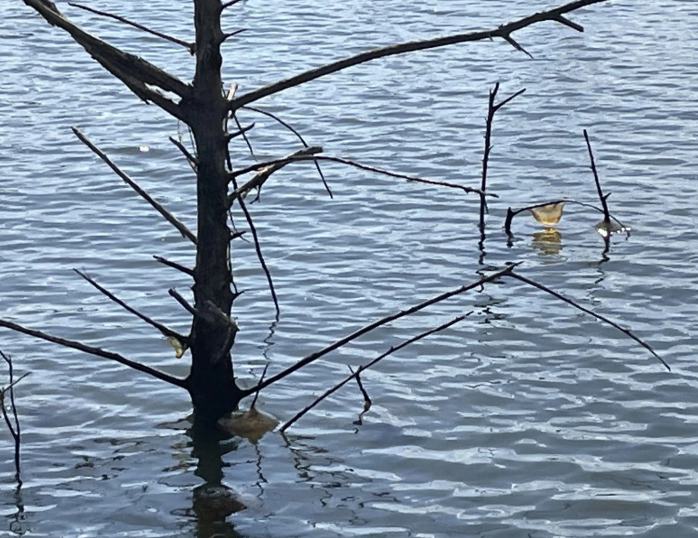
Despite their alien-like appearance, these jelly-like balls are a fascinating indicator of a thriving ecosystem. While they may initially seem strange or even unsettling, these pods are actually a natural occurrence that holds great significance for the health of the reservoir's aquatic environment.
As these jelly-like balls multiply and spread throughout the reservoir, they play a crucial role in the preservation of aquatic life and the sustainability of the surrounding ecosystem. Their presence indicates a healthy and balanced ecosystem, as they provide essential benefits to the water quality and overall ecological balance.
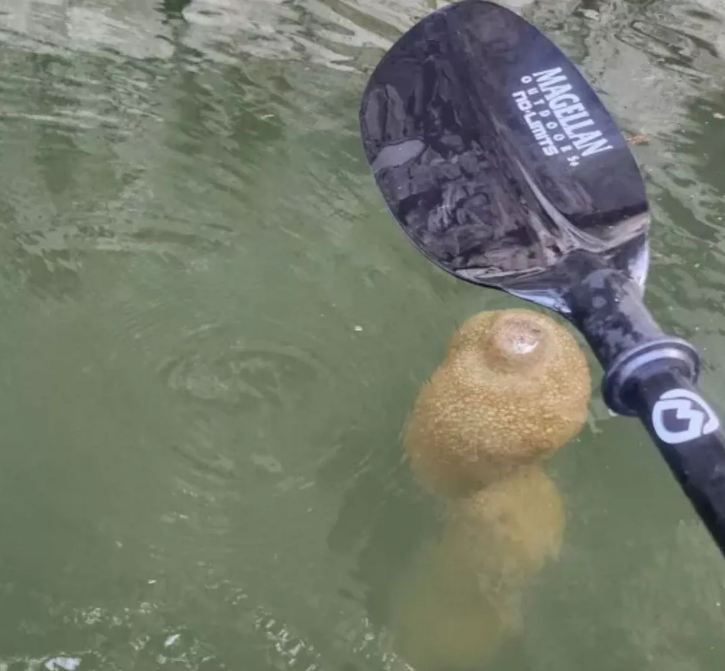
"These jelly-like balls you see are Bryozoans, and it's expected that they will appear in abundance this summer. There's no need to worry; these microorganisms are native to the area and pose no threat to humans or wildlife. In fact, their presence is a positive sign, indicating a healthy environment with clear water quality."
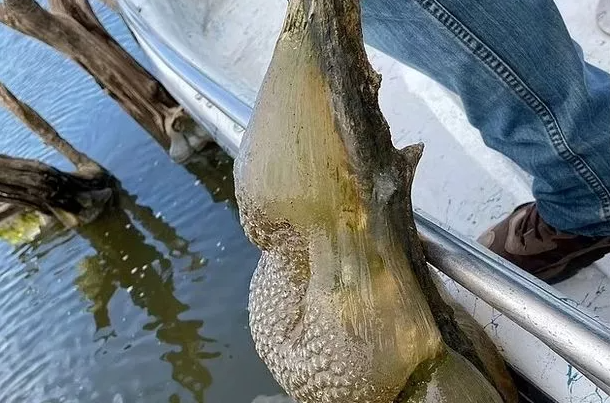
Despite their natural appearance, members of the public remained unconvinced and instead sought out-of-this-world explanations. One local, Ken Crandell, expressed his skepticism, stating: "I’ve almost lived on the water for 60+ years. But, when I started seeing these at Lake Wister last summer, I thought aliens had landed."
However, bryozoans have been a part of Earth's ecosystems for millions of years and are believed to have evolved from ancient marine worms. While some initially believed these aquatic animals were detrimental to the environment, they are actually quite beneficial. Bryozoans play a crucial role in cleaning the water, demonstrating their importance in maintaining the ecological balance of aquatic ecosystems.
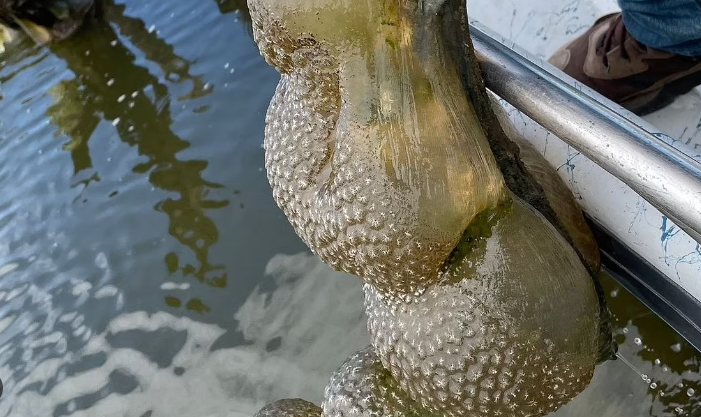
Mary Allen shared her astonishment, admitting, "I never dreamed they were helpful to clean the water but thought them to be invasive." This sentiment echoes the skepticism of many who, like her, had previously misunderstood the role of bryozoans in aquatic ecosystems.
Contrary to popular belief, bryozoans are not invasive creatures. Instead, they are integral components of freshwater habitats, having existed for millions of years. Originating from ancient marine worms, these organisms have adapted over time to thrive in various aquatic environments.
While some may have initially viewed bryozoans with suspicion, labeling them as harmful or invasive, scientific understanding reveals a different truth. Bryozoans are known to chow down on bacteria present in the waters, playing a crucial role in the natural filtration and purification of aquatic ecosystems. Far from being harmful, these organisms contribute to the overall health and balance of freshwater environments.
As Mary Allen's realization demonstrates, there is often more to the story than meets the eye. Through increased awareness and education, misconceptions can be dispelled, allowing for a deeper appreciation of the intricate relationships within the natural world.
Davy







